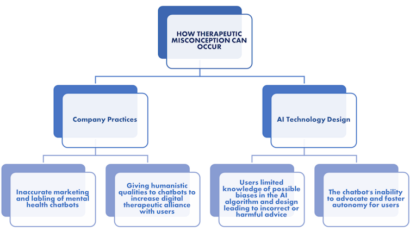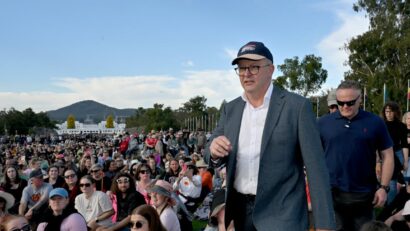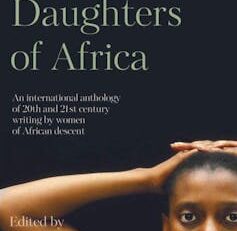
Kakapåkaka kaka
En ny klassiker kan man kalla det. Jag tog två kakor och slog ihop till en. I botten är det mördeg och ovanpå en havrekaka. Det blev en av mina favoritkakor. Lätta att göra är de också. Recept Ugnstemperatur 175 Läs mer…
Nyheter och länkar - en bra startsida helt enkelt |Oculus lyx vitae

En ny klassiker kan man kalla det. Jag tog två kakor och slog ihop till en. I botten är det mördeg och ovanpå en havrekaka. Det blev en av mina favoritkakor. Lätta att göra är de också. Recept Ugnstemperatur 175 Läs mer…

“This isn’t mine; this is one for the team,” said Succession star Kieran Culkin as he accepted the Best Actor award at this year’s Golden Globes. It’s a familiar aspect of Hollywood awards speeches – a reminder that the stars dazzling us on screen could not exist without the people who support them. “It’s been said, but it’s a team effort, this show,” said Succession creator Jesse Armstrong at the awards, underlining the same sentiment.
Hollywood speeches aside, we do seem to focus on individuals when we acknowledge greatness. In business and science, the dominant cultural narrative is that the bulk of innovation is driven by a handful of exceptional individuals, or “stars.” We elevate pioneers like Steve Jobs or Albert Einstein, and reward individuals who show similar promise with resources that allow them to continue performing high-value work.
Star scientists are those who publish significantly more than their peers, producing papers with greater impact and actively participating in commercialisation ventures. However, science is rarely a solo effort. Even star scientists usually have a team ¬– a “constellation” – of collaborators behind them. Research teams have grown in size by 50% in the period between 1981 and 1999. In recent years, more than 80% of all science and engineering publications and over two-thirds of patents have been the product of multiple authors. Research collaborations that include star researchers typically achieve higher average performance than those without such individuals.
But what is the maximum impact that a single person can have on the joint performance of a collaboration? We examined the relative contributions individuals and their collaborators make to scientific innovation to understand how to optimize team composition to best perform.
How star researchers improve collective performance
Star researchers improve collective performance in two ways. First, the presence and contributions of the star researcher improve the quality and output of their collaborators, leading to greater overall team success. Previous approaches have studied this so-called spillover effect by examining what happens when a star scientist leaves the group. These studies showed that when this happened, colleagues experienced a lasting 5-10% decline in publication rate.
Second, once a researcher has initial success, they find it increasingly easy to attract talent and resources. This is called the “Matthew effect,” named after a (loose) interpretation of a Biblical parable.
In practice, the Matthew effect reflects a feedback loop wherein star researchers can increase their success at a greater rate than their peers. It has been borne out by studies showing that star scientists gain preferential access to valuable resources like funding, talented graduate students, and advanced lab facilities in both in academia and in the private sector.
30 star scientists and their constellations
Prior research has treated spillover and the Matthew effect separately, but they are inextricably linked. So, we developed a model to capture this complexity.
We investigated the star-constellation relationship in collaborations that resulted in an invention. University researchers must disclose new inventions to their institutions. Because the disclosure is a legal document, it’s useful for our research because it sidesteps social noise such as favours and institutional politics that may skew rates of publication authorship. The data was taken from a U.S. university with a renowned medical school.
Analysis was performed using data on the 555 invention disclosures that were registered between 1988 and 1999. From the total cohort of 1003 scientists, of which 248 were team leaders, we identified a cohort of 30 “stars” who were in the top 5% of globally cited researchers.
Irreplaceable stars
The contribution of a star scientist to a team is dominant – i.e. their contribution exceeds that of their team – when they are “irreplaceable”. This means that they are so well-matched to the rest of the team that the constellation would be unable to produce work of the same standard without them, even with a new leader.
What makes a leader “well matched” to their team? We looked for trends in the dataset, considered the research impact, knowledge profile, and the range of seniorities in the group, so we could determine what matters the most when scientists choose collaborators.
We found that high-value team leaders tend to work with high-value collaborators, supporting the theory that star scientists attract talented constellations. Further, prominent leaders have access to, and are preferred by, collaborators with whom they share some expertise overlap, though a very high similarity makes the collaboration less favourable. Some common language and goals are a strength, but too much overlap in expertise stifles innovation.
In addition, high-value team leaders tend to work in groups where scientists of both senior and junior ranks come together. We therefore argue that diversity of perspectives and skills enables discovery. Last but not least, star scientists and their collaborators tend to share the same research profile with respect to the application domains of their research.
Star’s surprisingly small contribution
We used these findings to investigate whether the star or constellation makes the greater contribution to scientific discovery. When a star and constellation are well-matched, they produce higher quality research. For each collaboration, we calculated whether the star or constellation would be harder to replace.
To calculate the replaceability, we replaced a star or constellation with the substitute that was the second-best match. The greater the loss in research impact, the more irreplaceable the missing star or constellation was to the research.
Surprisingly, our results show that it is rare for a single person to make a more impactful contribution than their team. The relative contribution the star makes to knowledge creation surpasses the constellation’s in only 14.3% of collaborations. The constellation is the dominant party, in terms of relative value creation, in only 9.5% of cases. In more than three-quarters of cases, neither party dominates, with complementarity between star and constellation maximizing research value. In almost every pairing, innovation was a collective endeavor.
In short, to identify the drivers of innovation and discovery, we should not allow our view of the entire sky to be eclipsed by a few very bright stars.
Championing the whole team
Scientists perceived to bring star qualities are in demand and are often induced to transfer from one institution to another. This research suggests that administrators should endeavour to enable stars to move with their teams. Adjusting to work without their collaborators may have an adverse effect on the scientist’s research and their ability to attract additional talented hires. Dominating stars suffer a smaller loss without their team, but they are getting a bigger piece of a smaller pie.
However, the most significant takeaway for this research is that research credit is unfairly biased towards prominent individuals. Star scientists undoubtedly drive innovation, and a minority brings irreplaceable value. However, when considering the research output of a star, their achievements should be looked at within the context of a team. In most cases, the constellation brings a high contribution that merits recognition with IP credits, financial rents and other resources. Läs mer…

Many schools say anti-racism and equity initiatives matter for quality education, yet specific plans are often wanting. In 2023, the not-for-profit organization People for Education reported that 73 per cent of schools included anti-racism and equity in their school improvement plan, but only 28 per cent of school boards actually have an anti-racism policy, strategy or approach.
More work is needed from school boards to support anti-racist teaching and learning. However, in the interim, what can classroom teachers do to create equitable and anti-racist classrooms that meet their racialized students’ needs?
We are two researchers and educators whose work has explored anti-racist approaches to teaching literature. We are interested in how literature engages students in powerful conversations about topics like grit, determination and hope — and what resilience may look like for racialized students in Canadian schools as they face social and systemic barriers.
While literary texts can nurture deep understandings about racism and power, it’s not enough to provide students with racially and culturally diverse reading material. Depending on how teachers use a text in the classroom, it is equally possible to perpetuate harm as it is to empower racialized students.
Educators must adopt anti-racist teaching approaches that work towards holistic education models rooted in community practices.
6 ways to be an anti-racist educator video from Edutopia.
Systemic racism
Systemic racism refers to how various institutions in society are built on beliefs and values that perpetuate white supremacy.
Systemic racism appears in schools in various ways, including a lack of culturally relevant classroom materials. Black feminism scholar Robyn Maynard explains that for Black youth, in particular, schools tend to be their first encounter with the organized and systemic devaluation of Blackness present in society at large.
Read more:
Black youth yearn for Black teachers to disrupt the daily silencing of their experiences
Anti-racist education in schools is crucial for increasing racialized student agency and students’ abilities to thrive in classrooms. For non-racialized students, anti-racist teachings allow them to unpack how systems of oppression perpetuate divides and how they may be impacted by these systems. By identifying these systems, students can work towards effective change.
Defining student success
While dominant understanding of the purpose of education tends to measure student success based on academic grades and transferable career skills, it is important to view student success as intimately related to self-expression and fostering community.
The scholar and educator bell hooks reminds us that classrooms are spaces of radical possibility that can create space for student joy and freedom. Student success then translates into creating environments where students can realize their passions and work towards possibilities of self expression and collaborative expression.
Artist Leone McComas paints a mural called ‘Black Joy’ in Toronto in October 2021.
THE CANADIAN PRESS/Evan Buhler
Why English class?
As the late Cree lawyer and author Harold Johnson explains in The Power of Story: On Truth, the Trickster and New Fictions for a New Era, “story is power.” Stories allow us to reflect on the past, present and future while connecting with others.
Counter-stories — narratives about marginalized groups not commonly heard in society that challenge social, racial and cultural stereotypes — can be empowering for racialized and marginalized students because they help readers understand they’re not alone. These also provide an avenue for students to discuss topics related to marginalization without directly addressing their own experiences.
Read more:
First Voices: New Grade 11 English courses can support reconciliation and resurgence by centring Indigenous literature
Stories can also provide teachings to contribute to holistic forms of education and foster empathy for others.
When educators and students study narrative structures, they find a starting point to understand different power dynamics in our world.
English teachers can support students to pay attention to the finer details of literary texts to make informed observations and analysis — to “close-read” texts as a way to address the limitations of their readerly perspective and expand this. Close-reading can help students find points of connection and difference between themselves and the text, including stories and characters that represent themes about race and racism.
Anti-racist practice: two areas of focus
We recommend that English language arts teachers build their anti-racist practices in two areas: by developing their own racial consciousness as people making decisions about teaching and learning, and by prioritizing student empowerment. The ideas here are also beneficial for parents or people in the wider community who are interested in anti-racist learning.
1. Practise becoming self-aware of how your identities impact your values, beliefs and lived experiences.
Engaging with diverse literary texts can help teachers develop an anti-racist teaching practice by providing a concrete way to reflect on their “positionality” — how identities across various categories impact our values, beliefs and lived experiences. Kimberlé Crenshaw’s work on intersectionality highlights how where we are positioned in society with regards to different identities maps onto systems of power and oppression.
Critically reflecting on our values, beliefs and lived experiences as they relate to various facets of our identities is a key part of developing a conscious understanding of different ways you do or do not hold privileges.
Being self-aware shapes how you relate to a text. This can lead to deeper insights into how to navigate student relationships and curriculum.
2. Find community resources.
To develop your anti-racist lens, look to community resources. What groups are available to support anti-racist and anti-oppressive learning in your community? What are local grassroots organizations or libraries doing? Are there community conversation groups with elders, parents and youth? Are there social obstacles impacting specific intersections of identity, and how do those barriers look in your community? Invite guest speakers into the classroom and model creating generational connections. Demonstrate to students what respectful collaboration can look like.
3. Foster student agency.
Diverse stories allow students to enter conversations about inequity through narratives that resonate with them without demanding students share their personal narratives.
When teachers come prepared with community and academic resources, students can exercise their agency to access knowledge.
If teachers present alternative assessment strategies, students can build on their understanding by using their strengths as learners. They can also work towards teaching their peers.
4. Create bridges between students.
A competency for intercultural teaching is creating opportunities for peer learning and interaction among diverse learners.
Using stories that discuss power hierarchies, including but not limited to racism, can build bridges between learners with different intersectional identities. These stories become a common place of discussion that create opportunities for peer-to-peer connection without asking racialized and other marginalized students to disclose their personal narratives.
To encourage peer learning, invite students to use close-reading to help articulate their understandings of race and privilege based on their unique perspectives.
Recommended books
If you are looking to incorporate some Canada-based books to discuss forms of racism and connections to school, here are some recommendations:
How to Pronounce Knife by Souvankham Thammavongsa
Scarborough by Catherine Hernandez
Fire Song by Adam Garnet Jones
Dear Current Occupant by Chelene Knight
Home of the Floating Lily by Silmy Abdullah
Brother by David Chariandy Läs mer…

In societies worldwide, women are frequently expected to assume the role of primary caregivers, and too often, that means putting the well-being of others before their own. This expectation transcends cultural boundaries and manifests in various forms.
In 2022, over half of women and girls in Canada aged 15 and older — nearly 8.4 million people — dedicate themselves to caregiving, whether for children or dependent adults, paid or unpaid.
Nearly one-third of them were involved in unpaid caregiving for children, while 23 per cent were tending to adults with long-term conditions or disabilities. These figures highlight the sheer magnitude of women’s involvement in caregiving.
Whether tending to aging relatives, managing household responsibilities or caring for children and spouses, women must often balance caregiving duties and personal needs.
Caring for loved ones
Statistics Canada data shows that almost 65 per cent of caregivers providing 20 hours or more of care per week are women. Women caregivers can often become secondary patients as the constant and extensive care they provide to loved ones affects their physical and emotional well-being.
When it comes to caregiving in the home, daughters often face balancing caregiving responsibilities with their personal and professional aspirations. They often juggle multiple roles without adequate acknowledgment or support. The pressure to meet familial expectations while neglecting their well-being can significantly affect their physical and emotional health.
Women caregivers can often become secondary patients as constant and extensive care they provide to loved ones affects their physical and emotional well-being.
(Shutterstock)
Those pressures can continue into their marital lives, where they carry the caregiving responsibilities. From caring for aging parents and in-laws to managing household affairs, they are expected to prioritize the needs of others above their own. This expectation can be particularly pronounced in cultures where traditional gender roles are deeply entrenched, leaving little room for women to assert their autonomy and prioritize self-care.
The challenge of ‘sandwich caregiving’
A prevalent challenge faced by women caregivers is sandwich caregiving. This is where they find themselves sandwiched between caring for their children and aging parents or in-laws. This dual responsibility places immense pressure on women, both mentally and physically, as they strive to provide familial care.
Around 1.8 million people in Canada are sandwich caregivers, simultaneously caring for children and care-dependent adults. Furthermore, women are more likely to be sandwich caregivers than men. They are also more likely to report the negative impact of caregiving on their health and well-being, finances and family relationships.
In South Asian communities, daughters-in-law are frequently tasked with caregiving duties within their marital families, where they navigate familial structures that often prioritize the needs of aging in-laws over their own autonomy.
Similarly, in Chinese and other East Asian communities, women traditionally care for aging parents or in-laws, embodying the role of dutiful daughters who prioritize familial harmony and filial piety.
In Hispanic communities, the concept of “marianismo” emphasizes women’s role as nurturers and caregivers, wherein they are expected to prioritize the needs of their families above their own.
These cultural norms shape women’s roles within the family and influence their access to resources and opportunities outside the home. Despite variations across cultures, the common thread of women as primary caregivers underscores the need for recognition and support to alleviate the burden placed on them by societal expectations.
A prevalent challenge faced by women caregivers is ‘sandwich caregiving’ where they find themselves sandwiched between caring for their children and aging parents or in-laws.
(Shutterstock)
Addressing the burdens of caregiving
Providing more support to women caregivers means enacting policy reforms to provide them with paid family leave, flexible work arrangements, affordable child care and accessible health care and providing training and education programs.
Additionally, there should be community-based support networks that provide respite for carers alongside information and referral services and peer mentoring programs. These measures would help alleviate the burden on caregivers, promote their mental health and self-care and foster a more supportive environment for women balancing caregiving responsibilities with their own well-being.
Additionally, there need to be more open conversations about challenging traditional stereotypes and promoting gender equality. This is a crucial step toward making caregiving responsibilities more equitably shared within families.
Empowering women caregivers requires a fundamental shift in societal attitudes and norms. It involves recognizing and valuing their contributions while allowing them to prioritize their well-being. By raising awareness of the challenges faced by women caregivers and advocating for systemic changes, we can create a more supportive and inclusive environment for all caregivers, irrespective of cultural background.
The burden of caregiving transcends cultural boundaries, impacting women across societies worldwide. It’s time to recognize the invaluable role of women caregivers and work towards creating a more equitable and supportive environment for all members of society. Läs mer…

With current physical and financial barriers to accessing care, people with mental health conditions may turn to artificial intelligence (AI)-powered chatbots for mental health relief or aid. Although they have not been approved as medical devices by the U.S. Food and Drug Administration or Health Canada, the appeal to use such chatbots may come from their 24/7 availability, personalized support and marketing of cognitive behavioural therapy.
However, users may overestimate the therapeutic benefits and underestimate the limitations of using such technologies, further deteriorating their mental health. Such a phenomenon can be classified as a therapeutic misconception where users may infer the chatbot’s purpose is to provide them with real therapeutic care.
With AI chatbots, therapeutic misconceptions can occur in four ways, through two main streams: the company’s practices and the design of the AI technology itself.
Four ways therapeutic misconception can occur through two main streams.
(Zoha Khawaja)
Company practices: Meet your AI self-help expert
First, inaccurate marketing of mental health chatbots by companies that label them as “mental health support” tools that incorporate “cognitive behavioural therapy” can be very misleading as it implies that such chatbots can perform psychotherapy.
Not only do such chatbots lack the skill, training and experience of human therapists, but labelling them as being able to provide a “different way to treat” mental illness insinuates that such chatbots can be used as alternative ways to seek therapy.
This sort of marketing tactic can be very exploitative of users’ trust in the health-care system, especially when they are marketed as being in “close collaboration with therapists.” Such marketing tactics can lead users to disclose very personal and private health information without fully comprehending who owns and has access to their data.
The second type of therapeutic misconception is when a user forms a digital therapeutic alliance with a chatbot. With a human therapist, it’s beneficial to form a strong therapeutic alliance where both the patient and therapist collaborate and agree on desired goals that can be achieved through tasks, and form a bond built on trust and empathy.
Since a chatbot cannot develop the same therapeutic relationship as users can with a human therapist, a digital therapeutic alliance can form, where a user perceives an alliance with the chatbot, even though the chatbot can’t actually form one.
Examples of how mental health apps are presented: (A) Screenshot taken from Woebot Health website. (B) Screenshot taken from Wysa website. (C) Advertisement of Anna by Happify Health. (D) Screenshot taken from Happify Health website.
(Zoha Khawaja)
A great deal of effort has been made to gain user trust and fortify digital therapeutic alliance with chatbots, including giving chatbots humanistic qualities to resemble and mimic conversations with actual therapists and advertising them as “anonymous” 24/7 companions that can replicate aspects of therapy.
Such an alliance may lead users to inadvertently expect the same patient-provider confidentiality and protection of privacy as they would with their health-care providers. Unfortunately, the more deceptive the chatbot is, the more effective the digital therapeutic alliance will be.
Technological design: Is your chatbot trained to help you?
The third therapeutic misconception occurs when users have limited knowledge about possible biases in the AI’s algorithm. Often marginalized people are left out of the design and development stages of such technologies which may lead to them receiving biased and inappropriate responses.
Read more:
Artificial intelligence can discriminate on the basis of race and gender, and also age
When such chatbots are unable to recognize risky behaviour or provide culturally and linguistically relevant mental health resources, this could worsen the mental health conditions of vulnerable populations who not only face stigma and discrimination, but also lack access to care. A therapeutic misconception occurs when users may expect the chatbot to benefit them therapeutically but are provided with harmful advice.
Lastly, a therapeutic misconception can occur when mental health chatbots are unable to advocate for and foster relational autonomy, a concept that emphasizes that an individual’s autonomy is shaped by their relationships and social context. It is then the responsibility of the therapist to help recover a patient’s autonomy by supporting and motivating them to actively engage in therapy.
AI-chatbots provide a paradox in which they are available 24/7 and promise to improve self-sufficiency in managing one’s mental health. This can not only make help-seeking behaviours extremely isolating and individualized but also creates a therapeutic misconception where individuals believe they are autonomously taking a positive step towards amending their mental health.
A false sense of well-being is created where a person’s social and cultural context and the inaccessibility of care are not considered as contributing factors to their mental health. This false expectation is further emphasized when chatbots are incorrectly advertised as “relational agents” that can “create a bond with people…comparable to that achieved by human therapists.”
Measures to avoid the risk of therapeutic misconception
Not all hope is lost with such chatbots, as some proactive steps can be taken to reduce the likelihood of therapeutic misconceptions.
Through honest marketing and regular reminders, users can be kept aware of the chatbot’s limited therapeutic capabilities and be encouraged to seek more traditional forms of therapy. In fact, a therapist should be made available for those who’d like to opt-out of using such chatbots. Users would also benefit from transparency on how their information is collected, stored and used.
Active involvement of patients during the design and development stages of such chatbots should also be considered, as well as engagement with multiple experts on ethical guidelines that can govern and regulate such technologies to ensure better safeguards for users. Läs mer…

National Conservatism conferences, one of the main meeting grounds for the global radical right, rarely attract much attention. If not for the decision of a local mayor, the same neglect would have befallen this year’s event in Brussels.
But the mayor’s decision to shut down the conference on the grounds of “public safety” earned NatCon, as it’s known colloquially, headlines around the world.
Although the decision was quickly overturned and the conference continued the next day, the damage was done. Cancelling a meeting of radical right-wing activists who rail against “cancel culture” qualifies as a devastating self-inflicted wound for those seeking to counter the spread and influence of radical right ideas.
Radical right meeting ground
NatCon is part of a broader effort to build a transnationally connected movement against liberal globalization.
This year’s featured speakers included familiar right-wing figures like Brexit firebrand Nigel Farage, British politician Suella Braverman, controversial French author and presidential candidate Éric Zemmour and Hungarian Prime Minister Victor Orbán.
The meeting was barely underway when the police arrived to shut it down. While the official reason was “public security,” Emil Kir, the mayor of the Brussels district where the conference was being held, added a list of other justifications. They included NatCon’s “ethically conservative” vision, its “hostility to the legalisation of abortion, same-sex unions, etc.,” its focus on the defence of “national sovereignty” and its “Eurosceptic” attitude.
Police look on at demonstrators outside the National Conservatism conference in Brussels on April 16, 2024.
(AP Photo/Virginia Mayo)
This, combined with his observation that some of the speakers “are reputed to be traditionalists,” led him to declare that “the far right is not welcome.”
Far from silencing the radical right, we believe setting the police on a meeting of former and present politicians — however objectionable and offensive their opinions are to many people — will only make them more vocal and more convinced about the righteousness of their mission.
Their supporters, too, are likely to find the police action a step too far, which may in turn have consequences at the ballot box. In this sense, the Brussels mayor may have handed the radical right a gift.
Free speech as a rallying cry
The radical right has made free speech one of its battle cries, and the effort to “cancel” the conference confirmed its accusations that liberal free speech is limited only to those who support liberal positions.
In the words of Frank Furedi, one of the conference’s organizers:
“The city of Brussels is occupied by forces hostile to free speech and democracy. Tragically and shamefully, it has become apparent that the political establishment in Brussels is actively collaborating with left-wing extremists to prevent the free expression of political ideas and opinions in the city.”
The fact that the closure happened in Brussels — the European Union’s capital and a bane to the radical right — is an added bonus. The radical right regards the EU as a prime agent of the suppression not only of free speech, but also of national identities and sovereignty.
Hungarian Prime Minister Viktor Orban speaks during the National Conservatism conference in Brussels on April 17, 2024.
(AP Photo/Virginia Mayo)
For powerful politicians like Orbán, who addressed NatCon on the second day of the conference, the EU epitomizes the abusive power of a new global elite dedicated to exporting liberal values and in the process destroying traditional cultures and differences.
“I guess they couldn’t take free speech any longer,” Orbán said on X, adding the hashtags “#noMigration, #noGender, #noWar.”
Radical right goes global
Some might agree with the Brussels mayor that censorship of such unsavoury viewpoints is legitimate and necessary.
The analogy is frequently made to 1930s Germany, suggesting that if the Weimar government had suppressed the Nazi movement, the Holocaust might have been avoided. Even if historically correct, which is debatable, it is highly doubtful that such a strategy would succeed now.
Today’s radical right is global. Its ideas cannot be suppressed by cancelling meetings. Those ideas circulate through digital media and have supporters around the world. They’re no longer exclusive property of fringe movements; they’re now shared by powerful parties and governments.
In fact, many of the NatCon attendees moved on directly to the much bigger stage of CPAC Hungary, the largest international gathering of radical conservatives. Again, prominent speakers like Orbán, Geert Wilders of the Dutch Party for Freedom, Santiago Absacal of the Spanish Vox party and Tom Van Grieken of the Flemish Vlaams Belang were set to express similar opinions to those heard at NatCon Brussels.
Silencing doesn’t work
For those opposed to the ideas circulating at NatCon and CPAC, the debacle in Brussels contains one lesson: trying to silence the radical right isn’t the way forward. Not only is it likely to backfire, it will probably galvanize the radical right.
As one of our contacts at NatCon confessed, many are glad that the police intervened, not only because it exposed the thinking of those in power, but also because it gave conference attendees a sense of mission and encouragement to keep fighting.
The challenge for those of us who oppose these ideas is to demonstrate the same courage. Rather than censoring, we must dare to counter the radical right through rational arguments and political convictions. Läs mer…

Tackling violence against women will be the sole agenda item for a national cabinet meeting Prime Minister Anthony Albanese has convened for Wednesday.
The meeting, held remotely, follows thousands of Australians attending rallies across the country, as community anger surges over the horrific number of women killed so far this year.
One topic is expected to be bail laws. NSW already has an inquiry, after a man charged with crimes against a woman was granted bail and then allegedly killed her.
Albanese was at the Canberra rally on Sunday, where he received some heckling. He was accompanied by the Minister for Woman Katy Gallagher and the Minister for Social Services Amanda Rishworth.
“We are here today to demand that governments of all levels must do better, including my own, including every state and territory government,” the Prime Minister told the crowd.
“We’re here as well to say that society, and Australia, must do better.
”We need to change the culture. We need to change attitudes. We need to change the legal system. We need to change the approach by all governments – because it’s not enough to support victims.
”We need to focus on the perpetrators and focus on prevention.”
National cabinet would “talk about what we can do, including as part of the national plan to end violence against women and children, where in the first two budgets, we’ve added $2.3 billion,” Albanese said.
He said, “I know that we all must do better,” but “it’s not just governments’ problem. It’s a problem of our entire society” and a “a national crisis”.
“We need to make sure that this isn’t just up to women. It’s up to men to change men’s behaviour as well.”
The federal government has rejected calls for a royal commission into the issue, saying it already has a plan.
Rishworth told Sky on Sunday that victim survivors and many experts had had input into that plan. “So we believe we need to get on with the job.
”We have a Domestic, Family and Sexual Violence Commissioner and Commission that our government stood up. That role is incredibly important in monitoring. We believe we just need to continue to have this sustained effort. We believe that is what will make the difference,” she said.
In the latest incident, in Perth a 35-year-old man was charged with murdering a 30-year-old mother late last week.
A police statement said: “It will be alleged […] the accused physically assaulted the victim at their shared home on Currie Street [in Perth]”.
“It will be further alleged the accused set the property alight while the victim was still inside.” The woman was later found dead.
So far this year 27 women have died in gender-based violence in Australia.
eSafety review opens public consultations
Meanwhile, amid growing concern about the negative effects of social media (including its contribution to gender-based violence) and the government’s fight with Elon Musk over the post of the Assyrian church stabbing, public consultations are opening on strengthening eSafety laws. An issues paper is being released on Monday.
A review by Delia Rickard, a former deputy chair of the Australian Competition and Consumer Commission, is underway. She has already been consulting academics, civil society and government departments and agencies to determine issues, the review’s are scope and the public consultation processes.
“The Review is considering the effectiveness of the current framework, including whether more powers are needed to address new and emerging harms,” Communications Minister Michelle Rowland said.
It is also looking at “options to reduce harms caused by online hate, as well as new harms raised by emerging technologies such as generative artificial intelligence”.
Among the matters the issues paper raises are
further steps to ensure the industry acts in children’s best interests
adequacy of existing penalties and enforcement powers
accessibility of laws and regulations dealing with online content and harms, and
international developments in online safety regulation, including whether a new duty of care should be imposed on digital platforms. Läs mer…

South Africa has one of the highest homicide rates in the world, eclipsed only by Honduras and a handful of Caribbean island states. Furthermore, South African police crime data shows that South Africans experience above average levels of robbery, assault and rape.
The 2022/23 Victims of Crime survey, which surveyed a representative sample of 42,746 South Africans, showed that the population had been feeling acutely unsafe. Only 37% indicated that they felt safe at night in their communities. Public trust in the police has also fallen, declining from 38% in 2015 to 27% in 2021.
Illegal guns play a significant role in the high levels of violent crime in the country.
In June 2021 the police minister reported that there were more than 1.6 million private licensed firearm owners in South Africa who owned 2.7 million firearms. Since then, there have been close to 500,000 new firearm licence applications, according to the 2021/22 and 2022/23 police annual reports. Hence, it’s likely that there are around two million licensed firearm owners and about three million licensed firearms in the country.
The Small Arms Survey, which is widely regarded as the most reputable international source of information on firearms, has calculated that South Africa is ranked tenth globally in terms of licensed firearm ownership.
This begs the question: given that licensed firearms are being acquired by many South Africans for personal safety reasons, is a licensed firearm an effective means of self-protection in South Africa?
Read more:
Robberies surge as criminals take advantage of South Africa’s power outages
After researching firearm crime and violence in Africa for more than 20 years, as well as serving as an arms trafficking expert for the United Nations, I have concluded that firearms can provide a degree of safety to users, but more importantly, they present a range of risks for users and society at large, especially if they are in criminal hands.
Getting a gun licence in South Africa
South Africa has strict firearm control legislation, and applying for a firearm licence is a time-consuming process.
The Firearms Control Act (2000) stipulates that firearm licence applicants must:
be 21 years of age or older
not have a criminal record or a history of substance abuse, violence or negligent handling of a firearm
pass background checks conducted by the police, and competency tests relating to firearm safety and knowledge of the relevant laws.
Applicants for a licence for self-protection need to provide the police with a compelling written motivation.
Owning a licensed firearm is also costly. An entry-level handgun costs around R9,000 (about US$485). A licence applicant is also required to have a gun safe at home that is approved by the South African Bureau of Standards. The cheapest gun safe costs about R900 (about US$48).
Guns, crime and safety
A key issue in South Africa is that criminals frequently possess firearms. Furthermore, a study of offenders with residential robbery convictions showed that firearm owners had been targeted by criminals for valuables, including firearms. It also showed that criminals were likely to shoot household members if they felt threatened.
Drawing on anecdotal evidence, firearm interest groups in South Africa have strongly promoted the personal safety advantages of firearm ownership. They claim it provides firearm owners with lethal technology to defend themselves, their families and their property.
However, there have been no credible South African studies to substantiate such a position.
In the US, a few studies have suggested that, in certain contexts, the possession of a firearm may discourage criminal attacks.
The crime prevention potential of firearm possession has nonetheless been challenged by a recent review of US studies by Rand, a respected think tank. It suggests that widespread legal firearm ownership cannot be convincingly linked to crime prevention.
Read more:
Rape is endemic in South Africa. Why the ANC government keeps missing the mark
A recent South African study indicated that there was a higher risk of homicide during a robbery if both the perpetrator and victim had firearms. This was particularly the case for men as they were often more confrontational than women in such situations.
Studies from various countries have shown that other risks firearm owners and their families typically face include homicide, intimate partner violence, suicide, and accidental shootings.
Although most murders are committed with unlicensed firearms in South Africa, my research has shown that licensed firearms stolen from, or lost by, licensed owners have been acquired by violent criminals.
There have also been reports of licensed firearms being used in fatal road rage incidents. Licensed firearms have also featured prominently in studies on intimate partner femicide and domestic violence.
Firearms account for 8.6% of suicides in South Africa. This is close to the global average for firearm suicide, although countries with lower levels of firearm access tend to have lower percentages of suicide by firearm use.
A Red Cross Children’s Hospital study has indicated that the accidental shooting of children is also a problem in South Africa.
In short, firearm ownership is accompanied by risks of injury (and death) for firearm owners and their families.
Legal risks of firearm misuse
Firearms may provide firearm owners with a means of self defence in confrontations with criminals, but the unlawful use of a licensed firearm can have negative legal consequences for firearm owners, including criminal convictions. For example, a firearm owner may be charged with committing a violent crime if they use unreasonable and disproportionate lethal force when confronted by a criminal threat.
Read more:
South Africans are feeling more insecure: do Ramaphosa’s plans add up?
Hence, South Africans who are eligible to apply for firearm licences for self-defence purposes should carefully reflect on risks that possessing a licensed firearm may present to them and their families before applying. Prospective gun owners may also want to consider whether there are less risky alternatives to firearm ownership, such as improving their security in the home and joining a neighbourhood watch or community safety group. Läs mer…

The “birds and the bees”. The “facts of life”. Whatever you call it, many parents dread discussing sex and sexuality with their teenagers. They may be embarrassed, or worried that they don’t understand some concepts. In some countries, cultural norms may mean it’s considered inappropriate for adults and adolescents to talk about sex.
However, these are conversations worth having. A large body of research has shown that teens who openly discuss sex and sexuality with their parents reduce their risky sexual behaviour, leading to improved reproductive health.
It’s also important to remember that this won’t be a one-off discussion. Adolescents undergo constant development, facing new questions and challenges as they grow. Continuous dialogue allows parents to provide ongoing guidance, address emerging concerns, and reinforce values over time. It also fosters an atmosphere of trust and openness.
I’m a public health researcher who studies adolescent sexuality, sexual and reproductive health. Based on my research, as well as on frequent interactions with both teenagers and their parents, I’ve put together this guide to address parents’ common questions and concerns. I hope this advice can help you to engage your teens in open, honest and helpful dialogues about sex and sexuality.
When should I start talking to my kids about sex and sexuality?
There is no universally “right” age to start discussing sex and sexuality with your children. However, I’d suggest that you can initiate discussions about body parts and puberty before your kids are 10. Conversations specifically about sex and sexuality can begin around age 10.
No matter your teens’ age, it is important for parents to create a safe space for these discussions by letting your teens know they are not being judged, and that everything they say is confidential.
Read more:
Let’s _not_ talk about sex: insights into how Kenyan parents talk to their teens
Family dynamics differ in every household. Sometimes teenagers trust or are more comfortable with one parent than the other. However, both parents should be on the same page to avoid giving contradictory messages to their teens. In a two-parent household, it is beneficial to have both parents involved in discussing sexuality education with their teen, but it is not necessary to always do it together. A combination of individual and joint conversations can be effective.
What sorts of topics fall under the umbrella of sex and sexuality?
Some of the important topics parents can discuss with their teenagers include
how the reproductive system functions
building healthy relationships – the importance of consent, communication, mutual understanding and boundaries
the physical and emotional changes that occur during puberty
how to maintain good sexual health practices and hygiene.
According to my religion or culture, it’s not appropriate to discuss these topics with my children.
Many parents have their own misconceptions and biases about sex, often rooted in religious or cultural beliefs. But the reality is that avoiding discussions about sex does not stop teenagers from engaging in sexual activities or seeking information from other sources. Studies have shown that “parent-child communication is strongly associated with a child’s safer sex practices, including condom use and delayed sexual debut”.
Read more:
Childhood sex education reduces risky sexual behaviour: a Nigerian case study
Face your own biases and sexual prejudices head on when talking to your teens. For instance, don’t shy away from talking about the spectrum of LGBTQ+ identities. Focus on the importance of respecting, accepting and accommodating different sexual orientations and gender identities.
I don’t understand some of the concepts my teen is asking about!
You’re not alone. Most parents are not experts on these topics. The important thing is to listen actively – tune in to their thoughts and feelings as they talk – without judgement, and with empathy. Try to be thoughtful, factual and compassionate when answering their questions. Don’t be dismissive.
You also don’t need to have all the answers immediately to hand. It is OK to ask your teenagers to give you some time to research the topic. You might suggest researching it together, or asking them to do some research and talk to you about what they find out.
Read more:
Social media for sex education: South African teens explain how it would help them
Another practical and effective way to deal with your teen’s questions and concerns is to connect them with available community resources. These could be school counsellors or community healthcare providers, such as doctors and nurses, who can offer age-appropriate information and confidential medical care. Look for local community organisations and support groups that can provide sexuality education, peer support and safe spaces. Parents’ recommendations and referrals will boost young people’s trust in these care services, encouraging them to use the resources and services.
My teenager says they belong to the LGBTQ+ community. I’m not sure how to support them!
First and foremost, it is wonderful that your teenager felt comfortable enough to share this with you, and it is great that you are willing to learn and be supportive. Here are some steps you can take to support your teenager who has come out to you as LGBTQ+:
Acknowledge and validate by letting your teen know that you love them and accept them for who they are.
Listen with an open mind, without judgement. This is a time for them to express themselves freely. Ask open questions to show your interest and better understand their experience.
Ask your teen what kind of support they need from you. Maybe it is just knowing you are there for them, or perhaps they would like you to connect them with LGBTQ+ resources or support groups.
Be patient with your teen and allow him the space to explore his feelings at his own pace, because coming to terms with one’s sexual orientation or gender identity can be a journey.
Challenge your assumptions and biases. Reflect on your own beliefs and be open to adjusting them if necessary.
Be an ally by showing your support not only within the family, but also in public.
Seek support If you are feeling overwhelmed or unsure about how to support your teenager, seek guidance from LGBTQ+ organisations, therapists, or support groups for parents of LGBTQ+ youth.
An investment in teens’ future
Providing accurate information, fostering open communication, and offering support equips your teen to navigate sex and relationships responsibly. When parents talk about sex and sexuality with their teenagers, it is an investment in their future health and well-being. By approaching it with sensitivity, honesty, and empathy, you can build a strong foundation for open communication and empower your teens to make informed decisions. Läs mer…

Published in 1992, Daughters of Africa is a groundbreaking volume of writing by women of African descent. It was followed by an expanded second edition, New Daughters of Africa, in 2019. The mind behind the books is pioneering Ghanaian-born publisher, writer and editor Margaret Busby. She became the first Black female publisher in the UK at 20 when she co-founded Allison and Busby in 1967. The company was first to publish a number of significant writers during her two-decade tenure.
Busby has continued to nurture new generations of writers, academics, editors, publishers and critics. In May she was in South Africa to give the keynote speech at the second Johannesburg Festival of Women Writers. I took the opportunity to talk with her about her publishing journey.
Phillippa Yaa de Villiers: It is a significant achievement, in editing Daughters of Africa, to bring such a large and diverse body of women together and keep them together. How did you manage that?
Margaret Busby: I do what I can do. What I can’t do, I can’t do. I don’t defeat myself before I start out. When it was published in 1992, people would say, “How long did it take to put this together? That’s over a thousand pages.” And I’d say, well, it either took me maybe 18 months or else it took me my whole life. Because, for as long as I was literate and interested in reading, I was collecting books and magazines. That first volume was what I resonated with, what I knew of, what I had access to.
And in fact, back then you’d have thought there were only, you know, a few women of African descent who were writing, and they were all American. Because back in those days, you’d find anthologies that would be called “anthology of short stories from the West Indies”. And they wouldn’t say by men, but then you wouldn’t find any women in them. Or there’s a volume of poetry from Africa; where are the women? It’s was if women were not writing. I wanted to say, well, they are there, they just haven’t been given the potential. I was trying to just share the space, I suppose, the literary space.
Jonathan Ball Publishers
Phillippa Yaa de Villiers: You were feminist before feminism, and that comes out in your books.
Margaret Busby: As you know, being a woman isn’t necessarily always easy. And historically, in terms of the way society has treated women, there’ve been all sorts of expectations of what you can do, what you can’t do. And sometimes it’s only another woman who can understand that, because it doesn’t happen to other people. Just as I don’t have to explain to another black person what it is to be black.
The way things were in the 1960s and 70s was not the way things are now. There are possibilities now that women can tune into, take advantage of, that work.
But who is controlling what is put out there? Who is controlling the narrative? Who are the publishers? Who’s controlling what gets reviewed? Unless those gatekeepers represent us all, then we have to rely on their impartiality or knowledge or whatever. I think we have to be involved. Women of African heritage have to be involved at every level.
Phillippa Yaa de Villiers: What do you still feel like you want to do? Because you’ve created a forest of all those women who write. You’ve conferred an authority on us.
Margaret Busby: It’s lovely for you to say that – makes it worthwhile. Of course, I’d love to do another volume and another volume, because in both Daughters and New Daughters, I’m not saying these are the only people you should read. And in the first volume, there was a bibliographical section of other books at the end, which was probably a hundred pages, just saying “go and find out more for yourself”. And now there’s the internet, so people can go and do their own research and do their own anthologies. I saw there was some anthology that came out of women of Hispanic descent in America, inspired by Daughters of Africa.
Margaret Busby being interviewed.
Photo: Phillippa Yaa de Villiers
Then we created the Margaret Busby New Daughters of Africa Award, which means that a woman student from the African continent gets a free course of study at London University’s School of Oriental and African Studies. And the first student who came through was (Kenyan writer) Idza Luhumyo, and she went on to Texas State University, and then won the Caine Prize in 2022. So we’re all part of this chain and this ripple effect, and that’s what I like.
Phillippa Yaa de Villiers: What are some important things you’ve learned in your career?
Margaret Busby: If you say to anybody, “Start a publishing company”, they’d say, “Oh, I haven’t got enough money”, “I don’t know enough”, whatever. There’s always some reason they think it’s going to be difficult. When I was 20, did I have any money? Did I know what the conventions were? Did I know I wasn’t meant to be doing this? No, I just said, that’s what I want to do, okay, I’ll do it. You shouldn’t be put off by somebody saying, “Oh, you can’t do that, it’s not done…”
That’s the great thing about youth. And I think sometimes youth has been stolen from the youth now, because they know too much. They think they know too much. But also, it’s not real knowledge. It’s just statistics on the internet. It’s just projections. It’s simulations. The Sims. That’s not reality. You don’t know if that’s how it’s going to pan out. So you have to try anyway. You have to just try.
Read more:
Children’s book revolution: how East African women took on colonialism after independence
I think that whole tradition of storytelling is important to hold on to. Listening to other people, listening to the stories you’re told by your elders, doesn’t necessarily mean you have to repeat what they do or what they say. But if you don’t know, you don’t know whether you agree, where you want to move on from. But it’s all part of making you who you are, who you may end up being, who you want to be, who your children might be. It’s all part of something that we’re contributing towards. Läs mer…

Imagine you’re lucky enough to travel all the way to the Moon, and you’re bouncing around in your space suit, exploring its surface. How high could you jump?
That’s what Miles, aged nine, from London, wanted to know. And so we found him an expert in astrophysics to help find the answer!
Listen to The Conversation’s Curious Kids, a podcast where kids get answers direct from experts.
You can read a print version of this story here.
The Conversation’s Curious Kids podcast is published in partnership with FunKids, the UK’s children’s radio station. It’s hosted and produced by Eloise. The executive producer is Gemma Ware.
If you have a question you’d like us to answer, you can email it to curiouskids@theconversation.com, or record and send your question to us directly at funkidslive.com/curious.
And explore more articles from our Curious Kids series at The Conversation.
Disclosure statement:
Jacco van Loon does not work for, consult, own shares in or receive funding from any company or organisation that would benefit from this article, and has disclosed no relevant affiliations beyond their academic appointment. Läs mer…